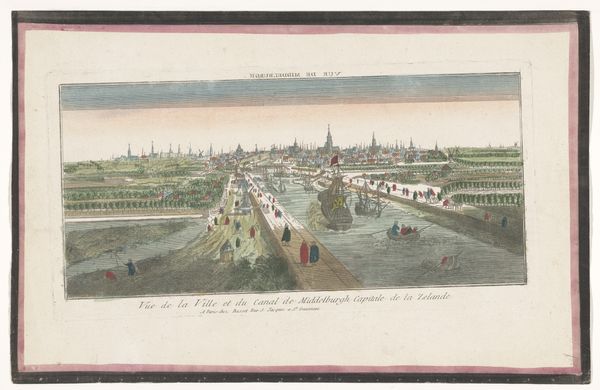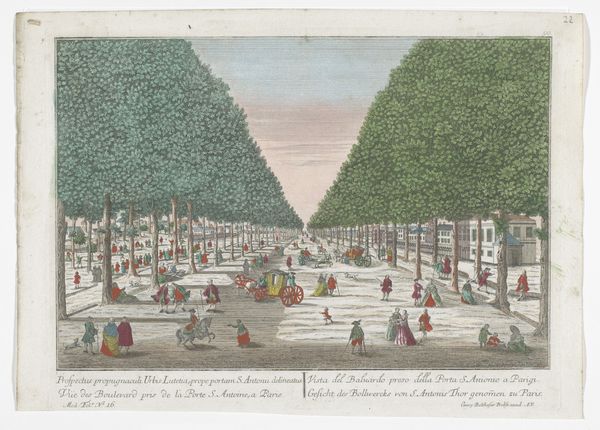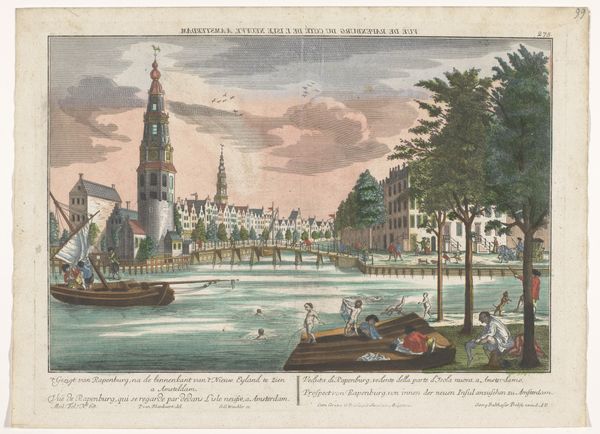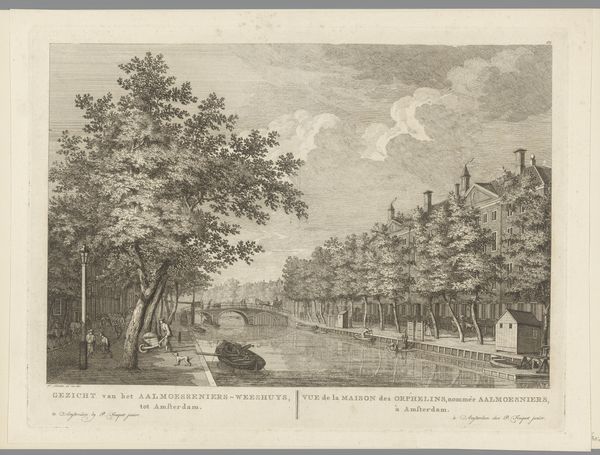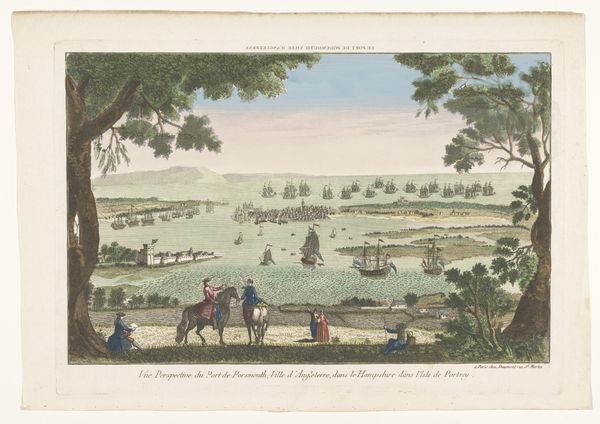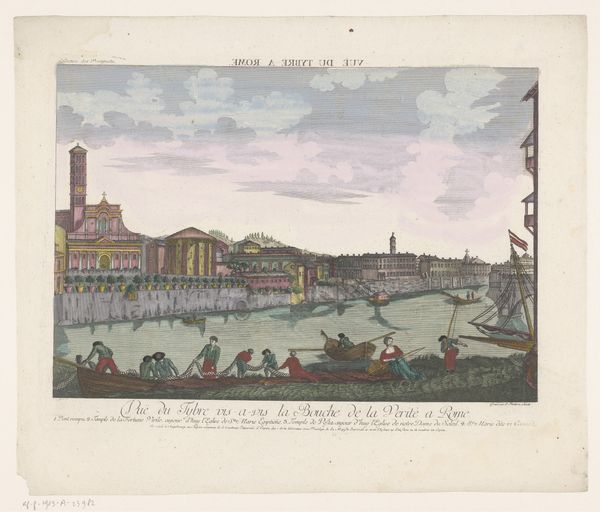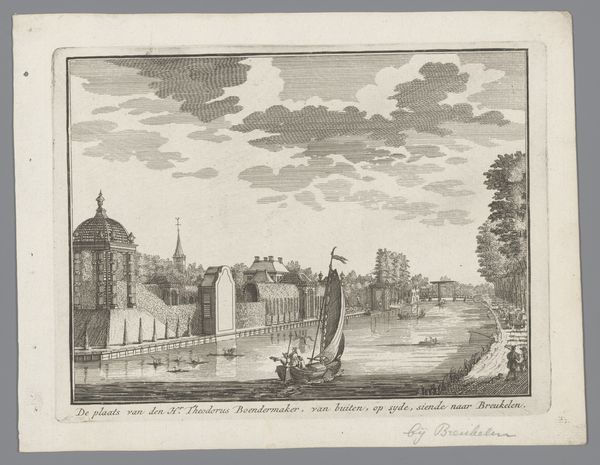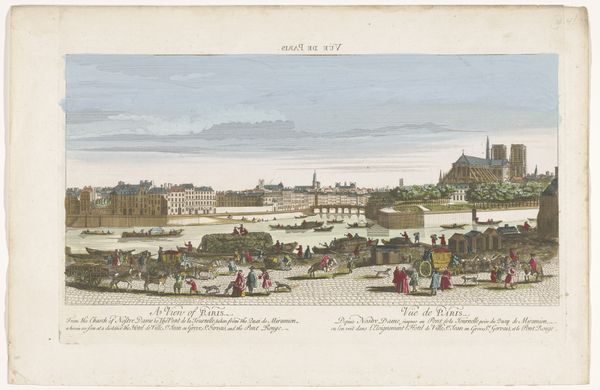
painting, print, watercolor
#
painting
# print
#
landscape
#
watercolor
#
coloured pencil
#
15_18th-century
#
cityscape
#
rococo
Dimensions: height 302 mm, width 392 mm
Copyright: Rijks Museum: Open Domain
Editor: This is "Gezicht op de stad Bremen," or "View of the City of Bremen," a watercolor painting or print from the late 18th century, attributed to the Kaiserlich Franziskische Akademie. I find the coloring charming, almost like a child's drawing. How do you read a cityscape like this one? Curator: It’s interesting you mention that charming quality. Prints like this played a significant role in shaping public perceptions of cities during the 18th century. They weren't always about strict accuracy; sometimes, they idealized urban spaces. Notice how the artist presents Bremen: orderly, prosperous, bathed in a pleasant light. Editor: So, it's less of a documentary piece and more about promoting a certain image? Curator: Exactly. Consider the target audience. These prints were often purchased by travelers, merchants, or civic leaders. What impression would this image of Bremen convey to them? Editor: That Bremen is a thriving, well-maintained city, open to business and trade, and a place they’d want to visit. Almost like early advertising. Curator: Precisely. Think about the composition: the neatly arranged buildings, the calm water, the presence of figures seemingly at leisure. It all contributes to that carefully constructed image. Do you notice how the use of color plays a part in creating an accessible scene? Editor: I didn’t really think of that at first. I now see that the pleasant lighting and the tranquil composition promote Bremen’s commercial activity while making it a picturesque, almost story-book setting. It's fascinating how the painting reflects a certain social and political agenda of its time. Curator: And it reminds us that images, even seemingly straightforward landscapes, are always embedded in a network of power, representation, and consumption. Editor: Thanks; I hadn't really considered that when viewing historical landscape paintings!
Comments
No comments
Be the first to comment and join the conversation on the ultimate creative platform.



